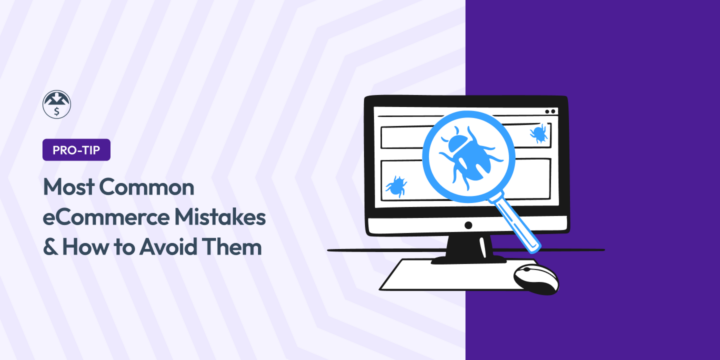
Do you want to avoid the most common eCommerce mistakes?
Navigating the online selling landscape can be a challenging yet rewarding journey. However, whether you’re a seasoned eCommerce vet or just starting out, it’s helpful to know which common pitfalls to look out for, and how to identify and address them.
This information can help set your eCommerce store on the path to success!
🔎 In this article, I’ll cover:
- 11 Common eCommerce Mistakes & Solutions
- 1. Choosing the Wrong eCommerce Platform
- 2. Not Enough Market Research
- 3. Poor Website Design & User Experience
- 4. Lengthy Checkout Process
- 5. Lackluster Security
- 6. Lack of Payment Options
- 7. No Customer Reviews or Social Proof
- 8. Inadequate Product Descriptions & Images
- 9. Ignored SEO & Digital Marketing Strategies
- 10. Lack of Analytics & Data Insights
- 11. Poor Customer Service & Support
- FAQs About Avoiding eCommerce Mistakes
11 Common eCommerce Mistakes & Solutions
Let’s jump into some of the most common eCommerce mistakes for business owners to avoid when running an online store. For each issue, I’ll explain why it’s important to avoid it and some tips and tools you can use to do so.
1. Choosing the Wrong eCommerce Platform
When you’re creating and managing an eCommerce website, the importance of choosing the right eCommerce platform and plugins to power it cannot be understated.
Among the myriad of platforms available, WordPress stands out as a versatile and popular choice. Its customizable nature and extensive plugin options make it a favorite for many aspiring online entrepreneurs.
While using WordPress as your Content Management System (CMS) may be a no-brainer, the open-source software doesn’t come with eCommerce functionality built-in. Therefore, there’s still the decision of which eCommerce plugin to use.
If you sell digital products and downloads, Easy Digital Downloads (EDD) is the best eCommerce solution:

This robust WordPress eCommerce plugin is designed specifically for digital selling. WooCommerce is a popular eCommerce plugin for selling physical products.
2. Not Enough Market Research
Before diving headfirst into the eCommerce world with a new business, it’s crucial to conduct thorough market research to understand your niche and target audience, including their preferences and online shopping behavior.
Without this foundational knowledge, you risk making decisions that alienate your target audience and hinder your sales.
Thoroughly conducting research involves:
- Analyzing market trends
- Identifying your competitors & similar eCommerce brands
- Understanding the demographics of your ideal customers & personas
Without this foundational knowledge, you risk making decisions that alienate your target audience and hinder your sales.
Start by utilizing marketing and analytics tools to gather insights into audience demographics and competitors’ strategies. Some popular options include Google Analytics and Semrush.

As you grow your business, engage directly with your customers through social media, email, and other channels. Conduct polls and surveys to gain direct feedback on their preferences and pain points.
3. Poor Website Design & User Experience
One of the most common eCommerce mistakes I see online sellers make is underestimating the impact of design and navigation on user experience. Cluttered layouts, confusing navigation menus, and slow-loading pages can drive potential customers away, affecting conversion rates.
The customer experience of your eCommerce store is paramount to its success. A well-designed and intuitive user interface guides shoppers seamlessly through their journey.

On the other hand, a poorly designed site leads to frustration and abandoned shopping carts.
It’s also essential that your site is mobile-friendly. With a significant portion of online shopping occurring on mobile devices, overlooking mobile optimization can lead to reduced user engagement and higher bounce rates.
Choose a WordPress eCommerce theme that is responsive and adapts seamlessly to different screen sizes:

Be sure to test your site from mobile devices to ensure there are no distracting popups and that every page, from your homepage to the product page and the checkout, is easy to access and navigate.
4. Lengthy Checkout Process
Speaking of your store’s UX, a complex checkout process can be a major turn-off for customers. Simplifying and streamlining the checkout can lead to more completed transactions and higher sales.
This is another reason your eCommerce plugin is so important. The right solution can influence your cart and checkout features to help ensure a smooth experience.
For instance, Easy Digital Downloads lets you easily optimize your eCommerce checkout to add conditional fields to your checkout form, offer multiple payment methods, condense the checkout into a quick, one-page process, and more.
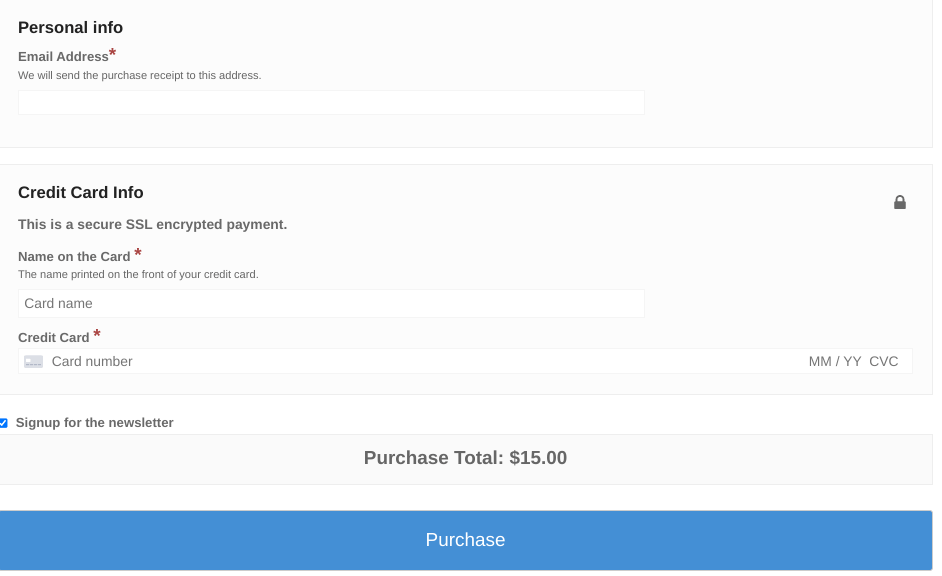
Making the checkout process as painless as possible can reduce the likelihood of shoppers abandoning their carts. In addition to making a single-page checkout, you can also add progress bar indicators, only ask for required information, and enable guest checkout.
5. Lackluster Security
Security breaches and data theft can tarnish the reputation of any eCommerce site. Prioritizing secure transactions and customer data protection is imperative.
Ensure that your eCommerce store is as protected as possible by using a trustworthy and reputable hosting provider that prioritizes both performance and security. For instance, SiteGround’s Managed EDD plans include Secure-Sockets Layer (SSL) certificates for free with every plan:

Beyond your web host, there are other proactive measures you can take. Install and activate a robust WordPress security plugin like Wordfence to provide protection against eCommerce fraud, malware, and intrusion attempts:

Maintain regular WordPress core updates and plugin updates to address security vulnerabilities promptly.
In addition, make sure not only your web development team members but the entire staff are educated on cybersecurity best practices, such as strong password management and phishing prevention.
6. Lack of Payment Options
Another common eCommerce mistake is failing to provide a variety of secure payment options.
Limiting the payment methods supported on your site can discourage new customers from completing their purchases, especially if their preferred method is not available.
Fortunately, there is an easy fix for this. There are a handful of popular and reputable payment gateways that let you accept transactions online via debit and credit cards, digital wallets, and bank transfers.

For our Easy Digital Downloads users, I typically recommend Stripe Pro or PayPal Commerce.
Both with advanced payment processing and automation features that help improve the security and efficiency of eCommerce transactions.
For instance, with Stripe Pro, users can save their payment and contact information, eliminating the need to manually enter their details on future purchases.
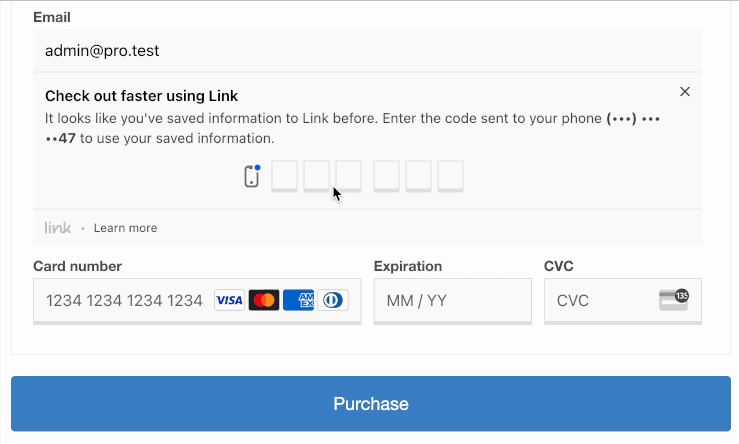
Easy Digital Downloads also lets you accept recurring payments for subscriptions.
7. No Customer Reviews or Social Proof
Neglecting the power of customer reviews and feedback is a detrimental eCommerce mistake. These insights provide invaluable information about consumer preferences, helping you refine your offerings and enhance customer satisfaction.
In addition, product reviews and other forms of social proof are tools for influencing purchasing decisions.
Encourage your customers to leave reviews and highlight positive testimonials on your website to build trust and credibility. Implement extensions like EDD’s Reviews add-on that lets you easily collect and showcase reviews across your eCommerce site:
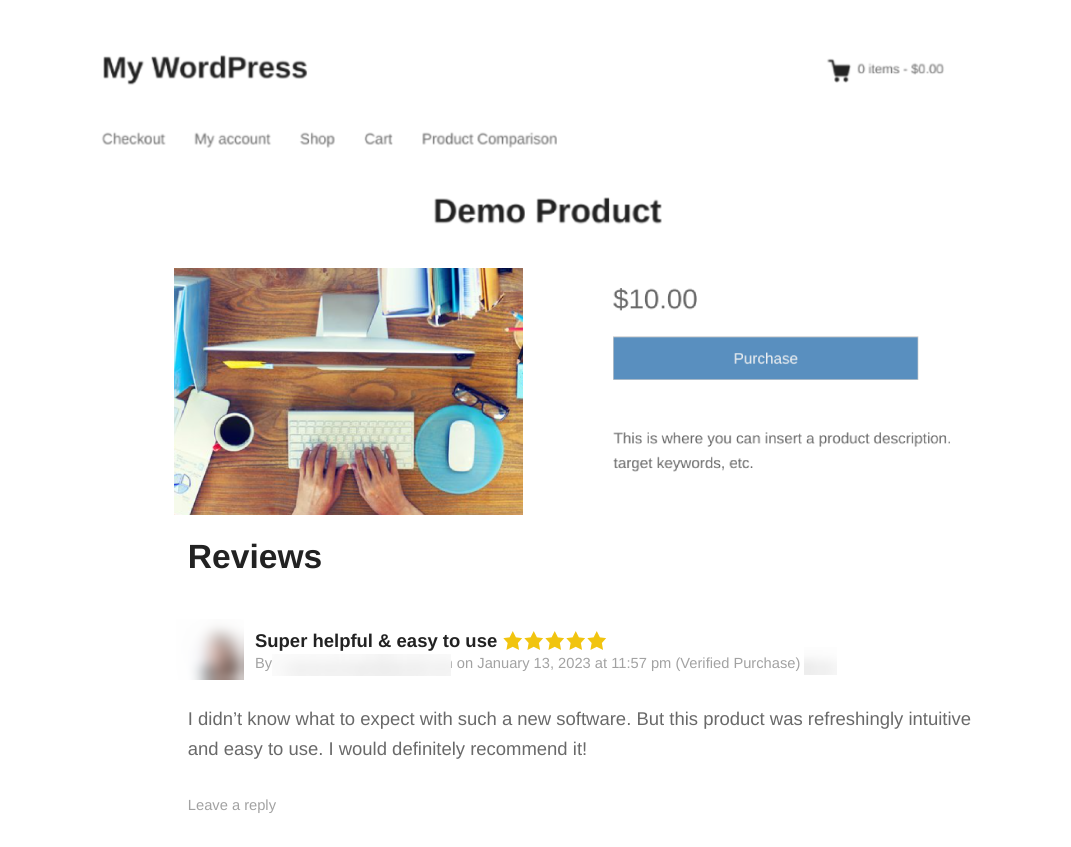
Consider offering rewards for reviews or social sharing. For instance, offering discounts as incentives for sharing products on social media can help expand brand awareness:

A plugin like TrustPulse can also help with social proof:
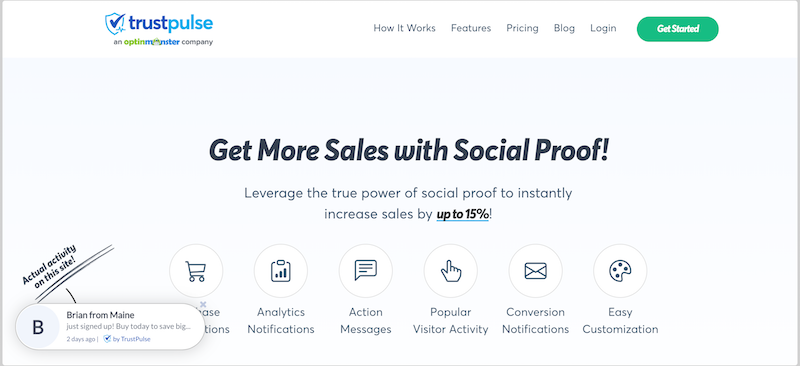
It lets you easily highlight and display positive customer feedback and activity in real-time.
8. Inadequate Product Descriptions & Images
Another aspect of eCommerce mistakes I see too many online sellers make is failing to use high-quality product images and detailed, accurate product descriptions.
Inadequate images and misleading descriptions can result in unsatisfied customers and increased return rates. In fact, research found that the majority of U.S. online shoppers who made returns in 2022 did so because the items didn’t match their descriptions.
Accurate and detailed product information is fundamental to building trust and ensuring customer satisfaction.
Be transparent and detailed about everything from product pricing to measurements, materials, etc. To help manage customer expectations, include multiple high-quality images that accurately and clearly showcase the item from all angles.
9. Ignored SEO & Digital Marketing Strategies
A well-defined eCommerce marketing strategy is crucial for driving traffic to your store and converting visitors into customers. But relying solely on one marketing channel is one of the most common and easiest eCommerce mistakes to make that can limit your reach.
Instead, I suggest diversifying your digital marketing strategies for broader audience engagement.
For example, to promote products and improve visibility, you could utilize a combination of:
- Search Engine Optimization (SEO)
- Content marketing
- Social media marketing
- Email marketing
- Paid advertising
There are so many plugins and tools that can help you automate your eCommerce marketing. For instance, an SEO WordPress plugin like All In One SEO (AIOSEO) helps optimize your website content for search engines and improve rankings in real-time:
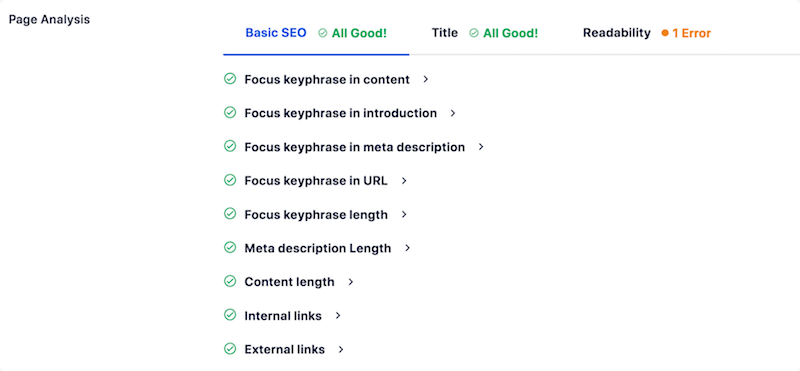
Easy Digital Downloads also offers a plethora of built-in features and add-ons you can use for email marketing.
For instance, you can install extensions that let you easily integrate with email service providers and apps, including MailChimp, GetResponse, Constant Contact, and more.
10. Lack of Analytics & Data Insights
Data is the lifeblood of eCommerce success, and data-driven decisions are crucial for adapting and evolving in this competitive online landscape.
Failing to analyze your website metrics and customer data deprives you of valuable insights.
Regularly review your website analytics to gain insights into customer behavior, identify areas for improvement, and optimize your marketing efforts.
To help make this easier, utilize a plugin like MonsterInsights to connect your site with Google Analytics:

You can use it to track site traffic, engagement and conversion rates, and other key metrics directly from your dashboard. Plus, it integrates seamlessly with Easy Digital Downloads so you can enable enhanced eCommerce tracking and advanced reports.
11. Poor Customer Service & Support
Rounding out our list of the most common eCommerce mistakes to avoid is poor customer service and support.
Customer support is a critical aspect of eCommerce, as it directly impacts customer satisfaction and retention. Ignoring queries or complaints can hamper lost trust and loyalty.
Provide responsive and helpful customer support through various channels, such as live chat, email, and phone support.
WordPress plugins like LiveChat let you offer real-time support on your website:

To further demonstrate strong customer support, it’s smart to create and add a Frequently Asked Questions (FAQs) section and detailed support documentation:

This can help you effectively manage and reduce live chat inquiries or support tickets.
Finally, be upfront and clear about returns, refunds, and other policies. Make it easy for your customers to both find and understand this information. Not only can this boost trust, but it can also help manage expectations.
FAQs About Avoiding eCommerce Mistakes
Let’s wrap up with some frequently asked questions about how you can avoid common eCommerce mistakes.
What are some advanced techniques I can use to further enhance my eCommerce success?
In this post, I covered the most common eCommerce mistakes and explored the ways to avoid them. There are some additional methods you can use to enhance your store’s chances of success. This includes:
- Leverage product bundling and cross-selling strategies to increase average order value.
- Implement personalized marketing campaigns based on customer data and purchase history.
- Explore loyalty programs and incentives to encourage customer retention and repeat purchases.
How can I stay up-to-date on the latest eCommerce trends & best practices?
E-Commerce is a continuous learning process. Staying informed about industry trends and adapting your strategies accordingly to stay ahead of the curve. Some ways to do that include:
- Subscribe to industry newsletters and follow prominent eCommerce experts on social media. Be sure to subscribe to our newsletter and follow us on Facebook or Twitter for more WordPress resources!
- Attend eCommerce conferences and workshops to network with other merchants and learn from their experiences.
- Regularly review industry research and analysis reports to identify emerging trends and adapt your strategies accordingly.
Why is SEO essential for eCommerce success?
SEO enhances visibility on search engines, driving organic traffic to the site. It helps potential customers discover products and services offered by the eCommerce store.
Avoid eCommerce Mistakes With EDD
By addressing these common eCommerce mistakes, you can create a thriving eCommerce business that attracts and retains customers, drives sales, and achieves sustainable growth.
Ready to expand and grow your online business? If you sell digital products, download Easy Digital Downloads today & start enhancing your eCommerce site in minutes:
Want to learn more ways to improve your online store? Check out the best WordPress plugins for eCommerce sites!
📣 P.S. Be sure to subscribe to our newsletter and follow us on Facebook or Twitter for more WordPress resources!
Using WordPress and want to get Easy Digital Downloads for free?
Enter the URL to your WordPress website to install.
Disclosure: Our content is reader-supported. This means if you click on some of our links, then we may earn a commission. We only recommend products that we believe will add value to our readers.